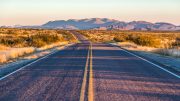Wildfire season has become an increasingly challenging time for travelers exploring the landscapes of Oregon, California, and Washington. Even if there’s not a fire in the specific region you find yourself, wind currents can bring smoke into an area from many miles away. For instance, air quality last summer in Oregon was impacted by fires in Canada.
While the West Coast faces significant fire activity, the practical advice in this article applies to any region prone to wildfires — which, sad to say, is now just about anywhere. With proper preparation and awareness, you can still enjoy your travels while staying safe.
It’s difficult to give a wildfire “season” these days. In the past, in general, wildfire season was considered to be June through November. In recent years, though, we’ve seen destructive wildfires in California in December and January.
Stay Informed Before and During Your Trip
The single most important safety measure during wildfire season is staying informed about current and potential fire conditions:
- Download a dedicated wildfire tracking app like Watch Duty, which provides real-time updates and evacuation notices. Many apps monitor wildfires, but out of the ones we’ve tried, Watch Duty seems like the easiest to interface with. Sign up for emergency alerts in the counties you plan to visit.
- Check official sources daily: Consider options like local forest service websites, state departments of forestry, and national parks service updates. Check road conditions through state transportation departments or, in Oregon, through TripCheck.
- Monitor air quality reports, as smoke can travel hundreds of miles from actual fires.
- Have backup destinations in mind if your planned route becomes compromised.
- Check for fire restrictions on any planned hiking trails or parks.
Essential Items to Pack During Wildfire Season
Always carry these items in your vehicle. It is especially handy to have some emergency supplies when traveling in fire-prone regions, but every traveler should have these supplies on hand in their car:
- Water: One gallon per person per day is recommended.
- N95 or KN95 masks for smoke protection
- First-aid kit: Consider adding eye drops for smoke irritation
- Emergency food supplies (a minimum three-day supply)
- Flashlights and extra batteries
- Battery-powered radio for emergency broadcasts
- Portable phone charger and backup power banks
- Paper maps (don’t rely solely on digital navigation)
- Emergency blankets
- Prescription medications and basic toiletries
- Food, water, and medication for traveling pets
Planning Your Wildfire Season Route
Identify evacuation routes from each destination. Share your itinerary with someone not traveling with you. Keep your gas tank full, as much as possible. Consider camping or staying at accommodations with quick access to main roads.
If you’re traveling through some remote regions during wildfire season, such as Eastern Oregon, there won’t be too many options. In a case like this, just be aware and keep up to date on whatever the latest news might be. Have supplies in your car in case you need something and there aren’t services around.
If You Encounter a Wildfire
If you find yourself near an active wildfire, follow all evacuation orders immediately. Move away from the direction of smoke. If roads are compromised, find a clear area away from vegetation. Never attempt to drive through active flames or heavy smoke!
While wildfire season presents additional challenges, with proper preparation and vigilance, you can still safely enjoy a road trip anywhere and at any time. As with any travel situation, be prepared, be flexible, and stay aware of what’s happening around you. These precautions will help keep you safe whether you’re visiting California’s redwoods, Oregon’s coast, Washington’s mountains, or any fire-prone region across the country.








